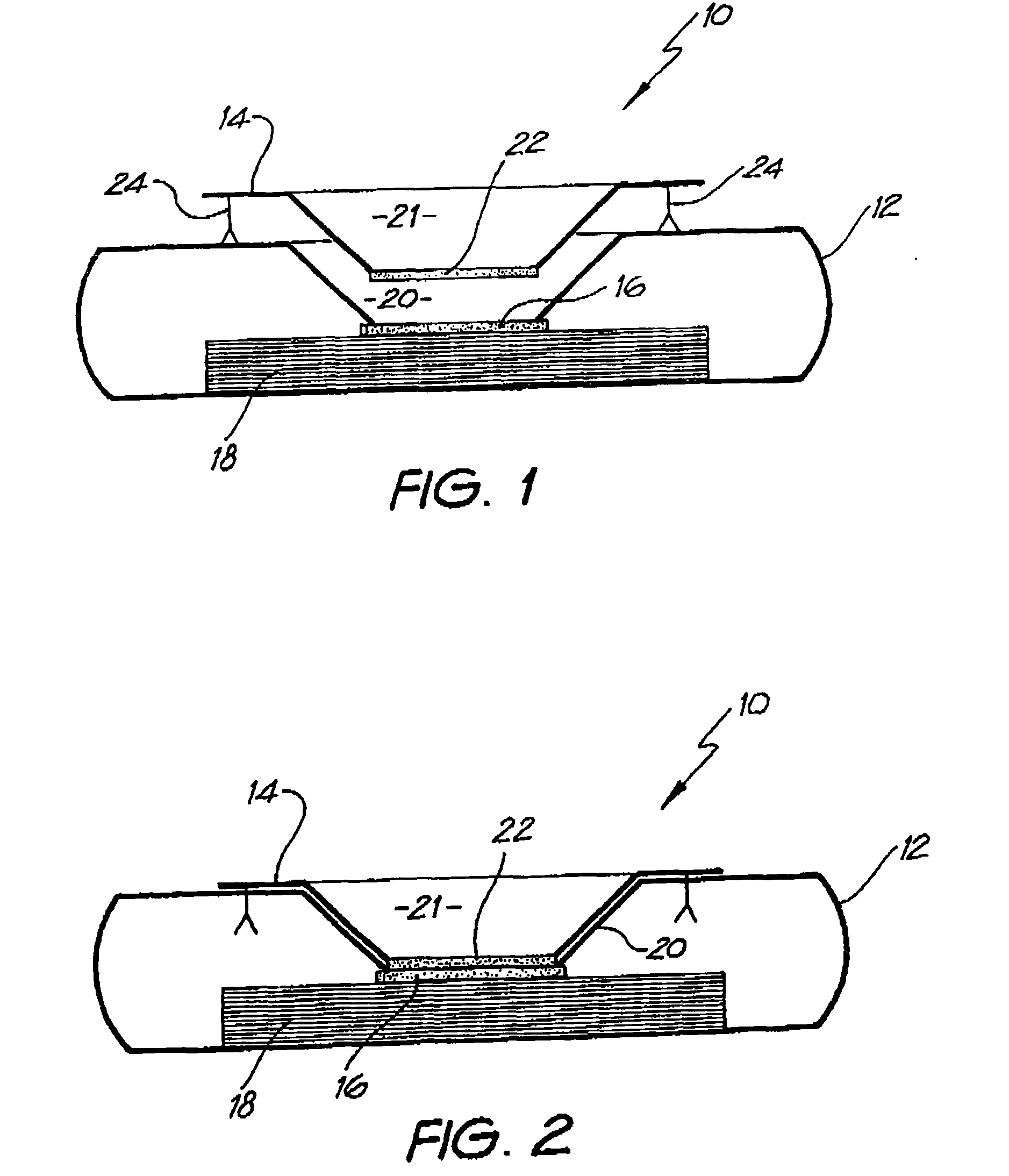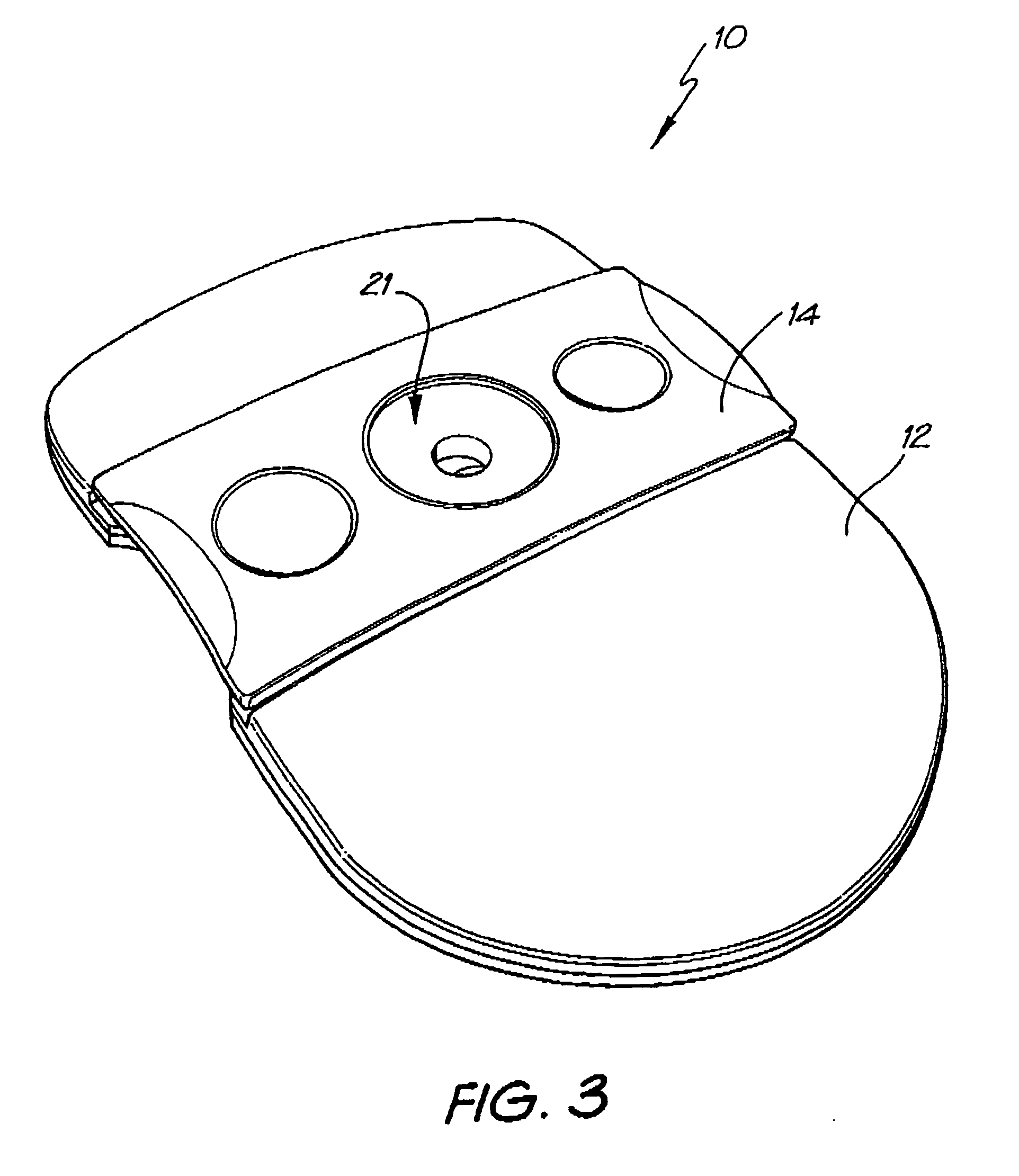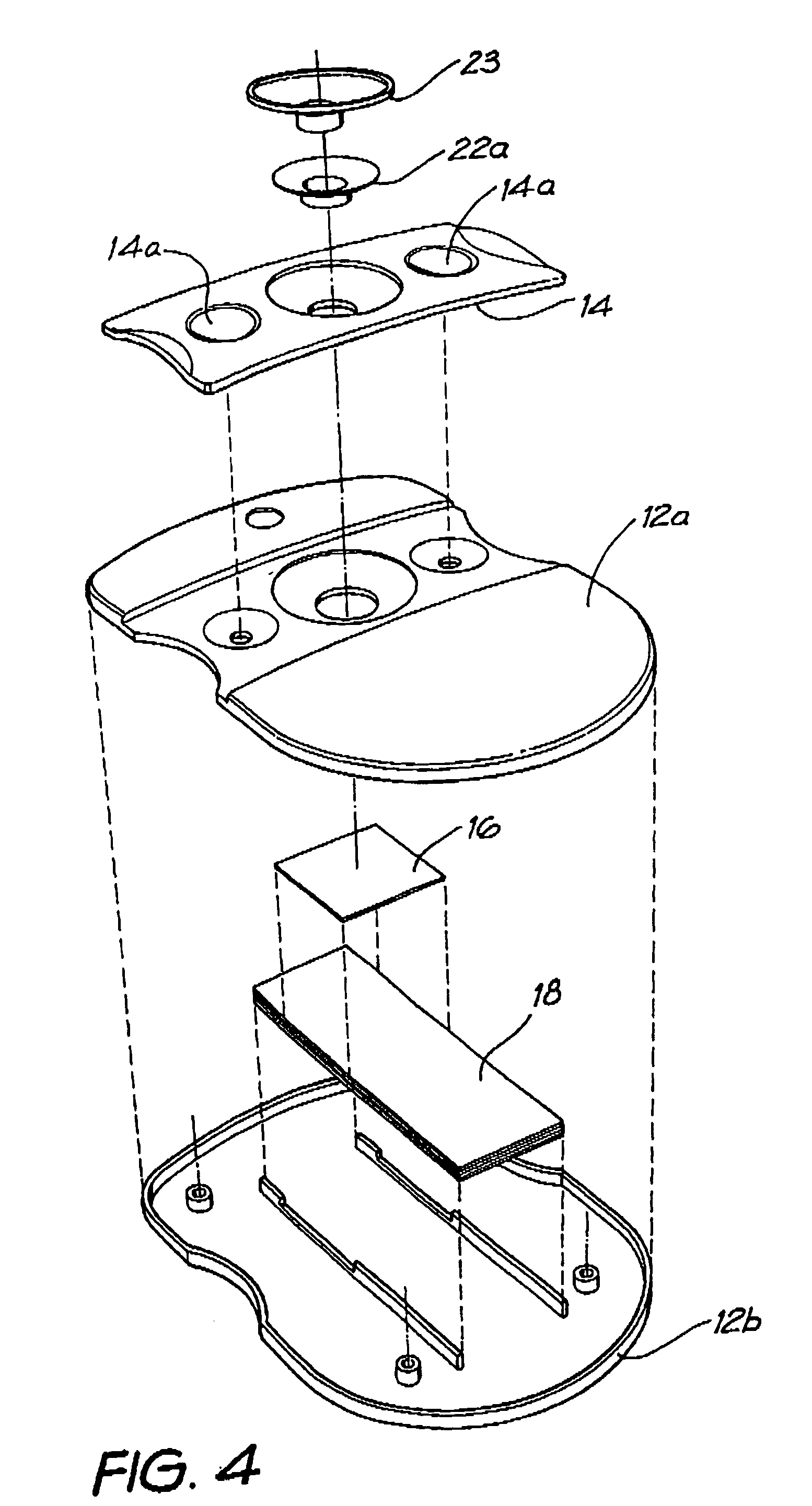Diagnostic testing process
a diagnostic test and process technology, applied in the field of diagnostic testing process, can solve the problems of increasing the volume of sample, increasing the cost of sample, and reducing so as to improve the sensitivity of the assay and reduce the volume of sampl
- Summary
- Abstract
- Description
- Claims
- Application Information
AI Technical Summary
Benefits of technology
Problems solved by technology
Method used
Image
Examples
example 1
[0138] Application of the Pre-Filter Chamber
[0139] Whatman membrane (paper) or Reemay filters (polyester; 1 cm2) are inserted into the chamber 21 in the filter frame to form a conical retaining vessel (pre-filter unit).
[0140] The sample is pipetted into the plastic pre-filter chamber (50-100 ul) along with a detection analyte in the form of a detecting antibody (50-100 ul) bound to colloidal gold (particle size 20-50 nm). The sample is pre-incubated with the gold-conjugate (O.D.4) within the pre-incubation chamber for thirty seconds after gentle pippetting to ensure adequate mixing. After thirty seconds the chamber is pressed into the well 20 of the test cassette 12. Upon contact with the membrane 16 containing the detection zone, the solution filters through to the absorbent layer 18 beneath. The pre-filter 14 is discarded when the solution has filtered through and two drops of PBSA wash buffer are then added to the reaction membrane to wash away excess gold-conjugate revealing t...
example 2
[0150] The assay device can also be used for detecting analytes in body fluids other than blood such as plasma, sera, urine, saliva and sputum. In this system the sample can be retained in the pre-incubation chamber 22 by use of a hydrophobic membrane such as Reemay or Hollingsworth and Vose 7303 instead of the Whatman grade 1 membrane or a 0.22 μm hydrophilic Durapore membrane filter described above. The sample is mixed with the detection analyte for the required pre-incubation period. To obtain efficient flow through capillary action to the absorbent layer 18 when the pre-incubation chamber 22 is lowered onto the cassette 12, one of two procedures can be followed: [0151] 1. The membrane 16 containing the capture analyte is prewet with at least one drop of wash buffer containing 0.01 M phosphate, 0.15 M NaCl, 0.0% Azide, 0.5% Tween 20 or any wetting agent containing a detergent; [0152] 2. The membrane 16 containing the capture analyte is blocked with a hygroscopic solution such as ...
PUM
 Login to View More
Login to View More Abstract
Description
Claims
Application Information
 Login to View More
Login to View More - R&D
- Intellectual Property
- Life Sciences
- Materials
- Tech Scout
- Unparalleled Data Quality
- Higher Quality Content
- 60% Fewer Hallucinations
Browse by: Latest US Patents, China's latest patents, Technical Efficacy Thesaurus, Application Domain, Technology Topic, Popular Technical Reports.
© 2025 PatSnap. All rights reserved.Legal|Privacy policy|Modern Slavery Act Transparency Statement|Sitemap|About US| Contact US: help@patsnap.com



